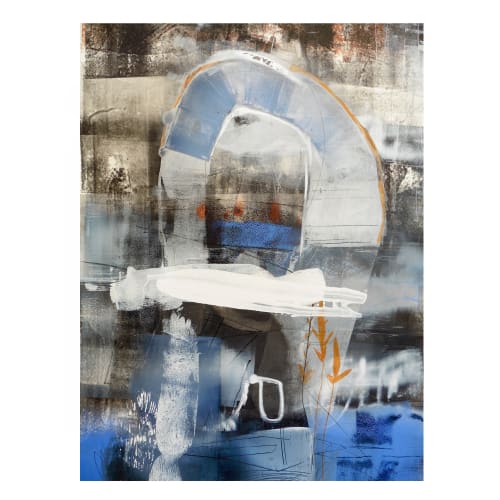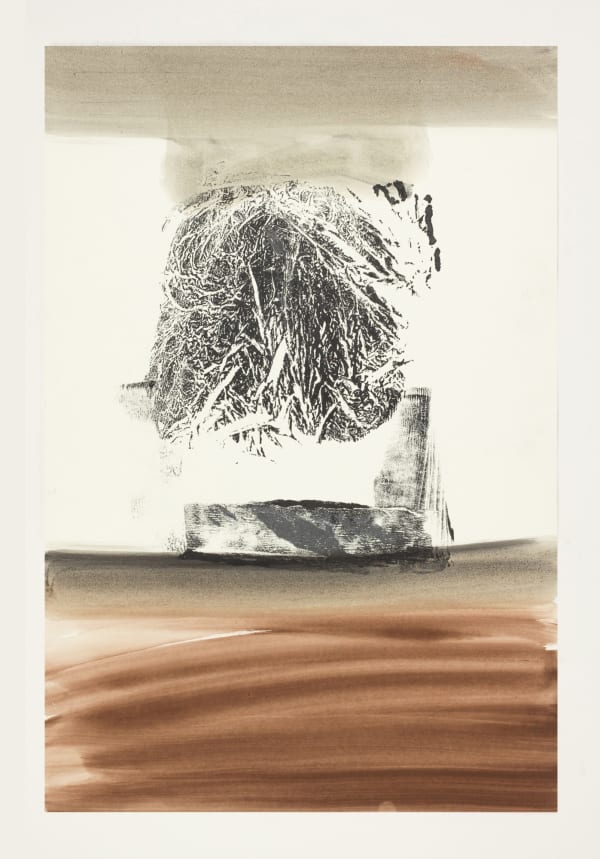Swimming Without Air: Morgan Doyle | Floor 1
American modernist Stuart Davies said in 1950 “I care nothing for abstract art as such, but only as it evidences a contemporary language of vision suited to modern life.” Collagist Robert Rauschenberg made his art with the junk he found on his afternoon strolls in downtown Manhattan. In England, painter Prunella Clough found beauty in debris and made debris beautiful. On his home road in Chelsea Morgan Doyle ingests the detritus of the day – stuff which remains will form the language of his prints – monoprinting being the perfect medium for receiving marks of memory.
Enough context, Doyle’s voice is hoarse, he has an early summer cold. Morgan says ‘summer’ quite a few times as he looks out into his garden. “I have to look out of the window to know what I am doing” – needing reassurance from the beautiful living. And beauty, not to be confused with attractiveness, is Doyle’s obsession. To make life fine is a curse bestowed on the gods, it’s also the burden of therapists and the impulse for philosophers and artists. Morgan Doyle works all the time, with noble reason – hoping that each new day he will make something simple, serene and so very beautiful – and when he does he will no longer swim like a fish under water, without air.
Until that moment comes Doyle will continue to engage us with his close to beautiful prints which, as the breath of a mans life, are rich with experience and human frailty. He says he is not interested in prominence or fame, just freedom – to work through his time. Truth nestles into a the thin skin of a likeable man.






